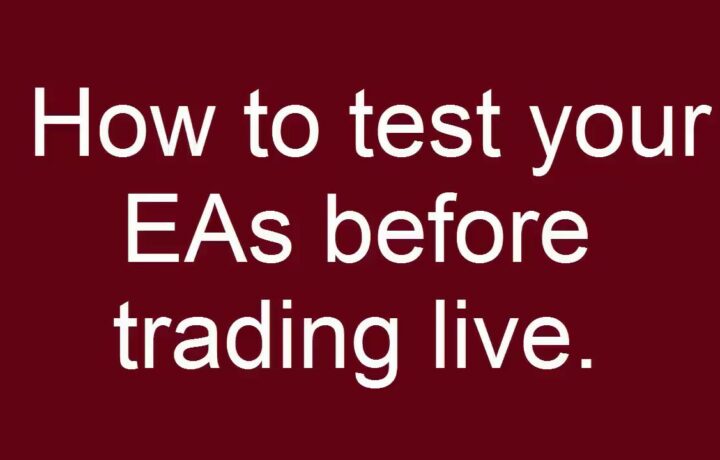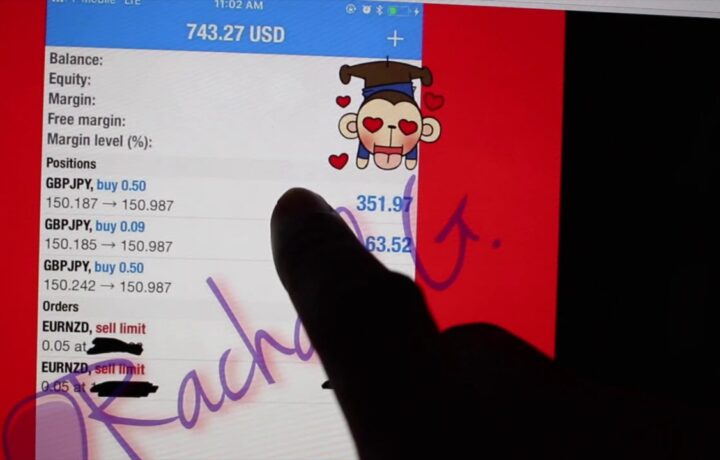Explore Interesting Stories Related to Forex Position Trading Labels, Thinkorswim Risk Management and Position Sizing – Thinkorswim Tutorial.
CLICK HERE for the Position Sizer for Thinkorswim…
ABOUT RISK MANAGEMENT
1. RISK PER TRADE
⁃ NOTE: Risk per trade is not the same as the amount of buying power it takes to make the trade
⁃ BUYING POWER: $50 stock * 125 shares = $6250 buying power required, but you’re not going to let that position go to zero if you can avoid it and lose all $6250, you’re going to use a stop order to limit your loss to a certain percentage of your account size.
⁃ RISK PER TRADE: $50 entry price – $48 stop price = $2 of risk per share * 125 shares = $250 of risk per trade
⁃ Try to keep your risk per trade under 2% of your account, at least until you can put together a long series of trades that are net positive on the whole after commissions.
⁃ $25k account * 1% = $250 risk on each trade max
⁃ $100k account * 1% = $1000 risk on each trade max
⁃ Be sure it’s an amount you’re comfortable with continuing to risk even if you have a string of losing trades.
⁃ Trading is a matter of probabilities. There will always be losing trades. What matters is that every 20-30 trade sample is a net win and that you are managing the risk properly.
2. POSITION SIZING
⁃ Simple equation: Risk Per Trade divided by Stop Size = # Shares
⁃ $100 risk / .10 stop = 1000 shares
⁃ $500 risk / .20 stop = 2500 shares
⁃ $250 risk / .50 stop = 500 shares
⁃ $100 risk / $2 = 50 shares
⁃ Put a post-it note on your computer with a quick reference guide for your current risk size ($100 for example):
⁃ .05 = 2000 shares
⁃ .10 = 1000 shares
⁃ .15 = 667 shares
⁃ .20 = 500 shares
⁃ etc.
⁃ Sometimes it’s best to round those numbers off to the nearest 100 shares (called 1 lot) or at least 50 share increments to better ensure a quick and easy order fill
3. LIQUIDITY MATTERS
⁃ 2 types of orders: limit and market
⁃ Limit = patient traders
⁃ Market = impatient traders
⁃ Liquidity = size and depth of the “order book” (consistently-spaced limit orders waiting to be filled at every price level)
⁃ If you don’t watch liquidity you can get into a position and then not be able to get out except at a large loss because there is no one waiting to buy your shares back from you when you go to sell.
⁃ Generally, watching the bid ask spread can tell you if a stock is liquid — the tighter the spread, the more liquidity in general. Many platforms like TOS display multiple levels of depth on the DOM / ladder so you can see how many orders are waiting and how big they are.
⁃ Especially when day trading, try to stick to well known stocks that you’re used to trading, and that you know generally have good liquidity. MSFT, AAPL, FB, etc.
⁃ You can also scan for a list of stocks based on min/max price, min avg daily volume, min avg per-minute volume, min avg per-minute trade count (“tick count”), minimum shares outstanding, etc.
CLICK HERE: Position Sizer for Thinkorswim…
LET’S CONNECT!
— https://facebook.com/easycators
— https://twitter.com/easycators
— https://plus.google.com/111965297385164147631
CLICK HERE: Position Sizer for Thinkorswim…
https://easycators.com/thinkscript/thinkorswim-position-sizer/

Forex Position Trading Labels, Thinkorswim Risk Management and Position Sizing – Thinkorswim Tutorial.
What is setting trading?
Setting trading is an usual trading approach where a private holds a placement in a safety and security for an extended period of time, typically over a variety of months or years. Position investors disregard temporary cost movements in favour of determining as well as benefiting from longer-term patterns. It is this sort of trading that a lot of carefully appears like investing, with the vital distinction being that buy-and-hold investors are limited to only going long.
Out of all the trading methods, position trading includes the lengthiest time-frame. Subsequently there is a higher possibility for profit as well as a boosted inherent threat.
The benefits of setting trading include minimal maintenance of positions, capitalising on more considerable trends and dampening the ‘sound’ of the market.
Position Trading
Placement trading is the lengthiest term trading and can have professions that last for several months to a number of years!
This kind of foreign exchange trading is scheduled for the ultra-patient traders, and calls for a good understanding of the principles.
Foreign Exchange Position TraderBecause position trading is held for so long, fundamental motifs will be the primary emphasis when analyzing the markets.
Fundamentals dictate the long term patterns of currency sets and it is very important that you recognize how financial information affects your countries and also its future expectation.
As a result of the lengthy holding time of your trades, your quit losses will certainly be huge.
You have to ensure you are well utilized or you will most likely get margin called.
Forex position trading additionally calls for thick skin due to the fact that it is almost guaranteed that your professions will certainly break you at one point or another.
These won’t just be little retracements either.
You may experience substantial swings as well as you have to prepare as well as have outright trust in your analysis in order to continue to be tranquil during these times.
Placement trading methods and strategies
Setting investors have a tendency to utilize basic and technical analysis to assess potential price trends within the markets. Here are a few placement trading methods.
50-day relocating ordinary trading
The 50-day relocating standard (MA) sign is a substantial technical indicator among setting traders. The reason for this is because of the reality that 50 is both a variable of 100 and 200, which have corresponding relocating averages that highlight significant lasting fads. This suggests that, when the 50-day MA intersects with 100- and also 200-day MA signs, maybe indicating the start of a new long-term trend making it an excellent indication for the placement investor.
Support and resistance trading
Support as well as resistance levels can indicate where an asset’s price motion is headed, subsequently showing to place traders whether to open up or shut a setting on specific assets.
An assistance level is the cost an asset that, historically, does not drop below. You can have temporary assistance degrees as well as historic support levels that hold for many years. Opposingly, the resistance level is the cost of a protection where it historically often tends not to be able to break. Position traders will certainly utilize long term resistance, as an example, to close out positions, just for the safety and security to fall after reaching this point. Likewise, they may purchase in at historical assistance degrees if they expect a long term pattern to start at this moment.
This technique calls for that investors evaluate chart patterns. When analysing the chart, setting traders take into consideration 3 elements when trying to determine assistance and resistance levels. Firstly, the historic cost of a safety and security is the most reliable source when determining assistance as well as resistance. In periods of significant gains or dips in a market, reoccuring assistance and resistance levels are easy to place. Secondly, previous support and resistance levels can indicate future levels. It is not uncommon for a resistance level to come to be a future assistance level once it has been broken. Last but not least, technical signs like the Fibonacci retracement give dynamic assistance as well as resistance degrees that move as the property rate actions.
Trading outbreaks
Trading breakouts can be helpful for setting investors as they can indicate the begin of the next major move in the marketplace. Traders using this strategy are attempting to open up a setting in the onset of a trend.
A breakout is where the rate of a possession moves outside defined support or resistance levels with increased volume. The idea behind trading outbreaks is to open up a lengthy placement after the security breaks above resistance or open a short placement when the safety and security breaks listed below support. An outbreak approach is usually the structure for trading large-scale rate movements in a safety. To successfully trade outbreaks, you will certainly require to be positive in identifying durations of support and also resistance.
Pullback as well as retracement method
A pullback in a market is a short dip or minor reversal in an asset’s pertinent rate pattern. This strategy is used when there is a quick market dip in a longer-term fad. Pullback investors intend to capitalise on these stops briefly in the market.
The idea behind this technique is to get low and market high before a market briefly dips, and afterwards to acquire again at the new reduced. If executed effectively, an investor can not only profit from a lasting fad, yet stay clear of feasible market losses by offering high and also getting the dips. Naturally, this is simpler claimed than done. Some pullback investors utilize retracement signs, like the Fibonacci retracement.
Understanding Setting Traders
Setting traders are, necessarily, pattern followers. Their core idea is that as soon as a trend starts, it is most likely to continue. Only buy-and-hold lasting financiers, that are categorized as passive capitalists, hold their placements for longer durations than do setting traders.
Their trading ideology is geared toward successfully recording the mass of a pattern’s action which would certainly cause an appreciation of their financial investment funding. Thus, it is the polar opposite of day trading which seeks to make use of short term market variations. It also varies from swing trading in that, though both are based upon idea of trend following, placement traders hold their positions for much longer timespan than do swing traders.
Placement investors may make use of technological analysis, fundamental evaluation, or a mix of both to make trading choices. They also count on macroeconomic aspects, general market fads and also historical patterns to choose investments which they think will certainly achieve their desired result. To be successful, a position trader has to identify the access/ exit levels and have a plan in position to regulate danger, normally using stop-loss levels.
The main benefit of setting trading is that there isn’t much need on the investor’s time. When the trade has been started as well as safeguards have actually been implemented after that it’s simply an issue of waiting on the desired outcome. The major danger is that the small changes that they picked to overlook can, sometimes, become pattern turnarounds, which can have a deleterious affect on their trading accounts. The various other disadvantage is that because their capital will be tied up for extended periods of time, they might succumb to opportunity costs.
Search Popular Articles About Forex Position Trading Labels and Financial market news, evaluation, trading signals and also Foreign exchange financial expert evaluations.
Please Note:
The details supplied by TradingForexGuide.com (TFG) is for general informative and instructional purposes just. It is not intended and also need to not be construed to constitute advice. If such info is acted on by you after that this ought to be exclusively at your discernment as well as TradingForexGuide.com (TFG) will not be held accountable as well as responsible in any way.




